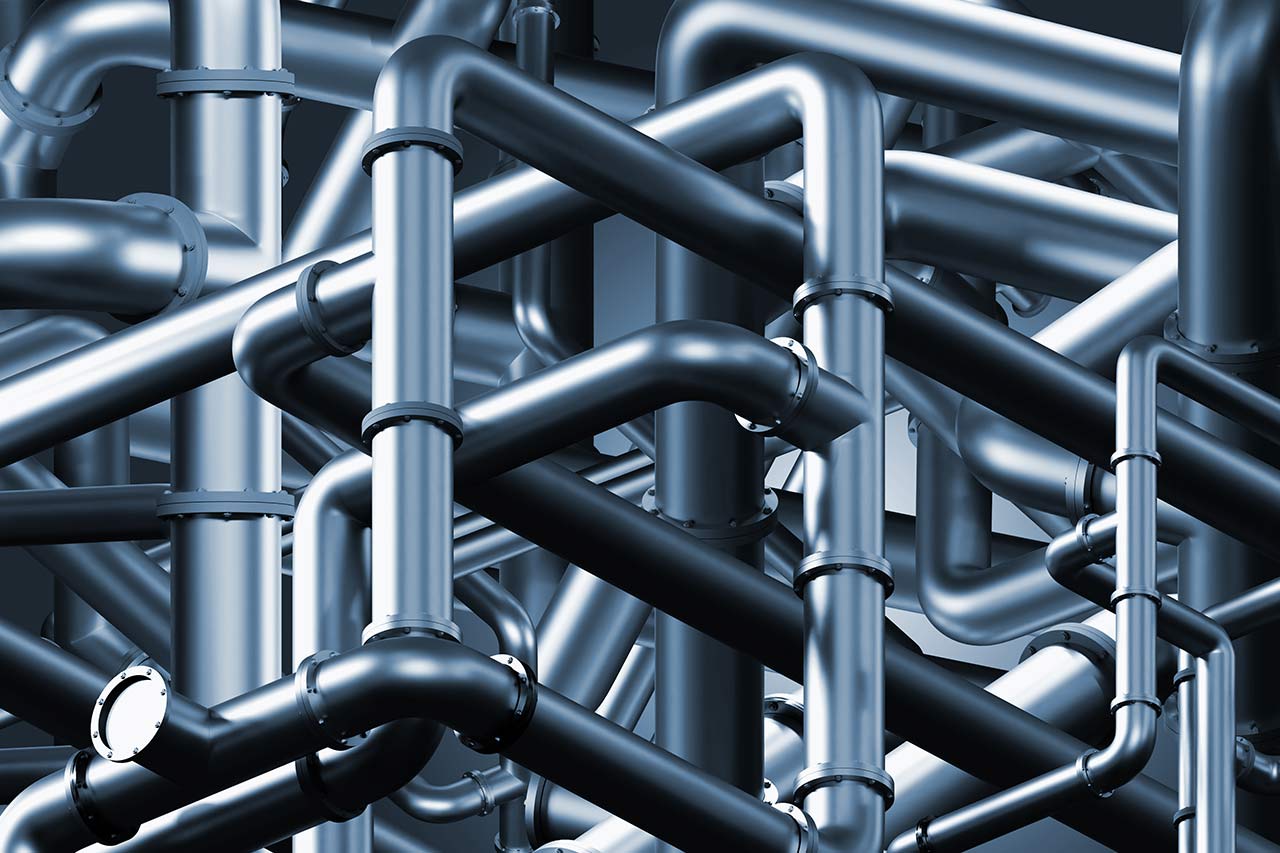Pipe inspection robots: miniaturized robots for hard-to-reach pipes

The exploration of confined spaces is a complex issue for industrial companies who wish to conduct regular inspections of their installations, especially in the petrochemical, oil and gas, nuclear, mining and water sectors. The inspection of hard-to-reach pipes is a major challenge to avoid production stoppages or even industrial accidents when the integrity of the installations is at risk. What are the latest technological innovations in pipe inspection robots to perform these inspections?
Pipe inspection to maintain the integrity of networks
In many industries, monitoring the condition of small facilities is a challenge. Being able to detect stress factors such as cracks, corrosion, pitting, or thermal bridges is essential to anticipate the aging and deterioration of industrial equipment. The challenge is to avoid leaks or failures that could cause production breakdowns and sometimes accidents.
However, an inspection can be complicated when pipes are difficult to access because they are buried, have complex geometries or are subject to difficult operating conditions (radioactivity, heat…). According to the French “Bureau d’Analyse des Risques et Pollutions Industriels” (BARPI), while corrosion is the first cause of industrial accidents, more than half of the corrosion-related accidents that have occurred in France over the last few years concern networks, especially pipes and ducts.
Thus, the exploration of small pipelines is a challenge, complex, but necessary to ensure their integrity. This exploration is made possible with robots that are small enough to enter in small diameter pipes. Equipped with high-definition cameras, sometimes combined with laser and acoustic technologies such as LIDAR and SONAR, the pipe inspection robots can characterize the condition of the analyzed pipes. They can also carry miniature sensors to perform various analyses (temperature, pressure…).
Learn more about the challenges of industrial robotics >
More high-performance pipe inspection robots
The most compact robot with camera
Honeybee Robotics, an American company that develops robots used for the exploration of the planet Mars, has designed a robot that can navigate in ferromagnetic pipes of 50mm-diameter. Equipped with a high-resolution camera, it can perform visual inspections in exceedingly small diameter pipes. With its magnetic wheel technology, it stays glued to the walls of the pipes and can thus avoid any type of small obstacles it might encounter.
The most versatile robot
SewerVUE Technology offers an inspection robot equipped with multiple types of equipment to characterize the geometry and condition of pipes with a diameter greater than or equal to 250 mm.
This robot can be used in non-magnetic pipes and works in both dry and submerged pipes. Its LIDAR allows it to make a 3D representation of the pipes’ geometry. Its SONAR, when used in submerged pipes, uses the propagation of sound to know the profile of the pipe and the volume of sediment. SewerVUE has also developed its own radar capable of determining wall thickness and detecting material loss. Finally, the robot also contains a camera that is useful to identify visible anomalies as well as to detect obstacles and navigate in pipes.
The most suitable robot for the exploration of occluded pipes
Other inspection robots under development are increasingly adapted to the needs of industry. The SARP group, a subsidiary of Veolia, has designed an autonomous robot-drone called PREDIRE capable of moving over kilometers of pipes without prior cleaning. Its propulsion system uses the Archimedean screw principle to enable it to overcome obstacles and evolve on all types of terrain. This robot can be used in pipes with diameters of between 200mm and 300mm which represents 70% of the wastewater network in France). The robot establishes a diagnosis of the network by autonomously mapping the defects detected from the high-definition photographs that it regularly captures. It facilitates the inspection of wastewater networks by freeing itself from the constraining stages of preliminary cleaning.
The inspection of hard-to-access networks and, more generally, the exploration of confined spaces is a major challenge for industrial companies. The aim is to avoid or anticipate production stoppages, or even accidents, by monitoring the integrity of installations. Miniature robots under development are more efficient to inspect all types of pipes and more adapted to the diverse needs of industrial companies. Do you encounter any problems related to the exploration of confined spaces in your facilities? We are here to help you identify existing technical solutions, particularly through technology scouting and partner research!
About the author,
Sébastien, Consultant in Alcimed’s Energy, Environment & Mobility team in France
Do you have an exploration project?
Our explorers are ready to discuss it with you